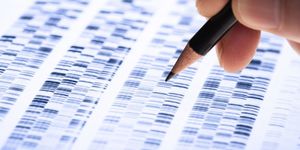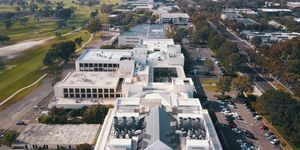The Nervous System Directly Controls Stem Cell Growth
Our body relies on somatic stem cells throughout our lives; we need them to continuously generate new cells as they wear out, like on the skin, in our blood (as described in the video below), or in the lining of the intestine. University of Illinois researchers see them as a repository of untapped potential. These cells could be used to regenerate damaged tissue, for example. Now they have discovered that the growth of those somatic stem cells is controlled directly by the autonomic nervous system (ANS).
"If we could find a way to target and control stem cell proliferation in the body, there could be potential medical benefits, including turning off the proliferation of cancer stem cells or inducing proliferation of somatic stem cells where we want to grow tissue," said Elizabeth Davis, doctoral researcher in the Neuroscience Program at the University of Illinois (U of I). Davis is the lead author of a study in Physiological Reports that shows for the first time that the ANS controls stem cell proliferation.
The ANS is a critical regulator of our bodily functions, like blood flow, breathing, digestion, and other unconscious actions. Its network stretches throughout the body and into almost every organ. The neurons that comprise the ANS release signals called neurotransmitters that have a direct impact on cellular targets - they can cause inflammation and changes in blood flow. While a role for the ANS in stem cell growth was suspected, it was not clear if it was a direct or indirect link. Establishing that the connection is direct means the ANS has therapeutic potential.
"If you wanted to change the regeneration potential of an organ, for example, you wouldn't have to stimulate or suppress the activity of those neurons. Instead, you could just figure out what neurotransmitters are controlling proliferation and then get that chemical to those stem cells with targeted drug delivery," explained study co-author Megan Dailey, assistant professor in the Department of Animal Sciences at U of I.
The researchers used a mouse model to study how stem cells resupplied the intestinal lining with cells. They determined that the stem cells have receptors that bind neurotransmitters, which then alter stem cell function. That indicated to the researchers that the link between neurotransmitters and stem cells is likely a direct one.
"We knew that nerves of the ANS came into close contact with cells of the intestinal epithelium, including stem cells, but we didn't know if the neurotransmitters were able to bind to the stem cells. When we isolated the stem cells and found there were actually ANS neurotransmitter receptors, we found that missing piece," Davis explained.
To confirm their findings, the team exposed intestinal epithelial (lining) cells that were growing in the lab to neurotransmitters. One of them, norepinephrine, functions in the fight or flight response, part of the sympathetic nervous system of the ANS. The other, acetylcholine, is a parasympathetic signal, which rests and digests. The ANS is outlined in the video. "When we simulated activation of either of those systems, we saw a decrease in stem cell proliferation," Dailey said.
It may be that when those systems are active, the body is busy doing other things and cannot put energy into making new cells, suggested Dailey. The researchers think that these findings apply to other parts of the body outside the intestine as well. They made their case in another recent publication in the American Journal of Physiology.
"In neuroscience, people don't see the ANS as flashy or exciting, but these nerves are reaching so many cells in the body, including stem cells," Davis noted. "Why would those nerves communicate with stem cells if they weren't doing anything? What if there's this big, exciting idea that we could use the nervous system to control stem cells?"
"The ANS isn't controlled by itself - it's controlled by the brain and the central nervous system. We think the brain is controlling the regeneration of all these tissues through the ANS. But that brings up a bigger picture,” added Dailey. “For individuals under severe depression or PTSD, for example, you see degeneration of some of their organs. It could be some sort of stress-related effect through the ANS decreasing the regenerative potential of the organs. Based on our findings, it looks like there could be a direct effect."
Sources: AAAS/Eurekalert! Via University of Illinois College of Agricultural, Consumer and Environmental Sciences, Physiological Reports, American Journal of Physiology








